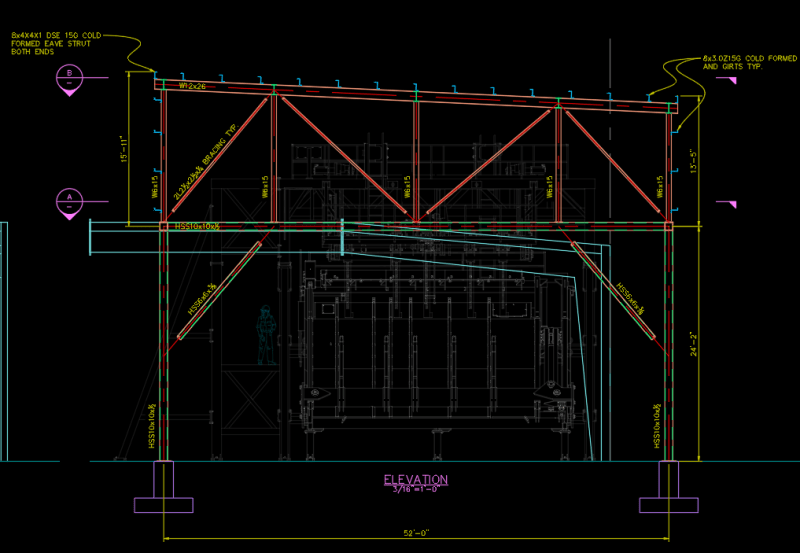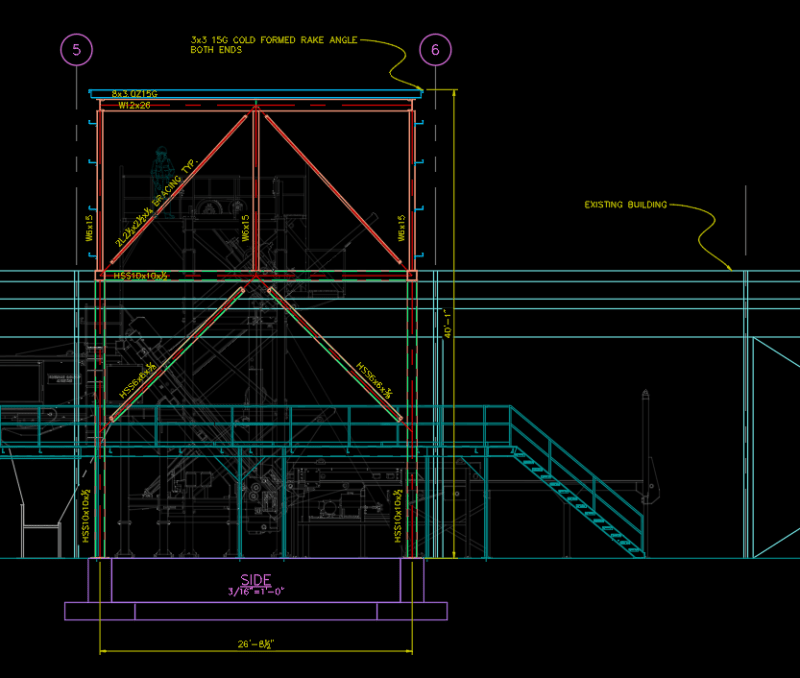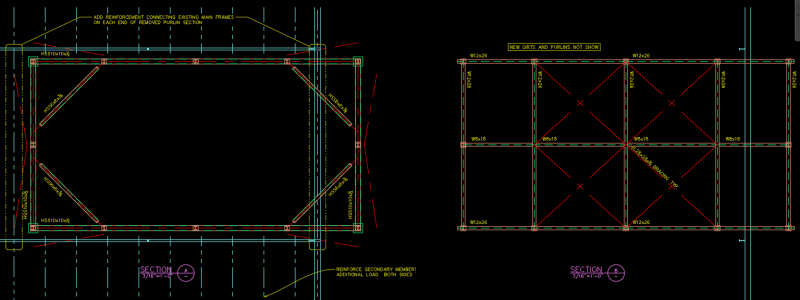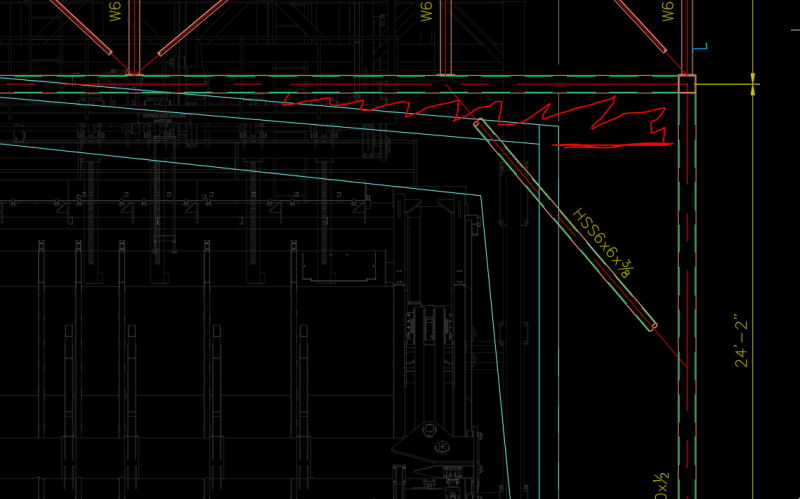Forgot2Yield
Industrial
Hi there,
I have a project where machinery is being installed inside an existing pre-eng metal building. One of the machines is too tall and is going to be sticking out through the roof so they are wanting a doghouse structure built on top of the roof to cover and enclose it (approx 30'X40'X 15'). I've told those in charge that additional columns would need to be added under the PEMB frame and that there would need to be quite a fair amount of analysis involved since there will be no extra strength from the PEMB that we can use. The issue that I have come across is that the client has no drawings of the existing PEMB or its foundation. So I'm trying to figure out what the best course of action would be other than trying to excavate to see foundation sizes or measuring up every piece of the PEMB. Has anyone been in a similar situation? I thought maybe I would request that the client reach out to the PEMB manufacturer and ask for more drawings? Other than that, maybe the only other option would be to build this structure completely separated from the PEMB with new columns running between the frames. Thought?
I have a project where machinery is being installed inside an existing pre-eng metal building. One of the machines is too tall and is going to be sticking out through the roof so they are wanting a doghouse structure built on top of the roof to cover and enclose it (approx 30'X40'X 15'). I've told those in charge that additional columns would need to be added under the PEMB frame and that there would need to be quite a fair amount of analysis involved since there will be no extra strength from the PEMB that we can use. The issue that I have come across is that the client has no drawings of the existing PEMB or its foundation. So I'm trying to figure out what the best course of action would be other than trying to excavate to see foundation sizes or measuring up every piece of the PEMB. Has anyone been in a similar situation? I thought maybe I would request that the client reach out to the PEMB manufacturer and ask for more drawings? Other than that, maybe the only other option would be to build this structure completely separated from the PEMB with new columns running between the frames. Thought?




